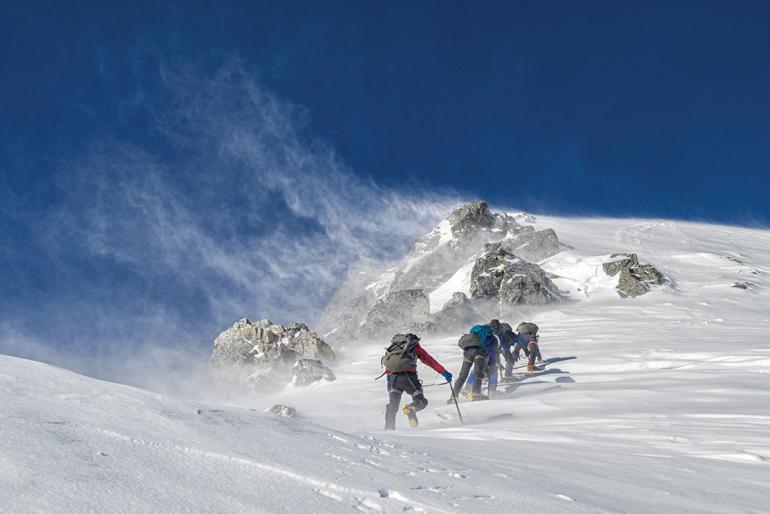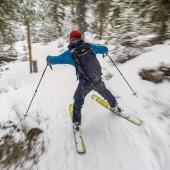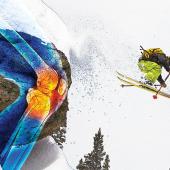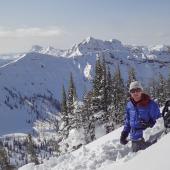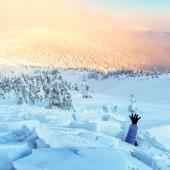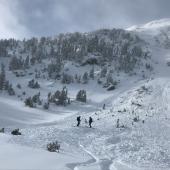Snow Safety Sans Skis
Avalanche considerations for early-season boot-packers.
It’s early winter and avalanche season has been underway since late October. Among others, backcountry skiers and snowmobilers are poking around the slopes. Fortunately, both groups have sport-specific education opportunities in avalanche safety. Other mountain travelers in early winter, including hikers, ice climbers, and shoulder-season hunters, tend to be on foot. Collectively referred to as “boot-packers,” these backcountry enthusiasts often end up post-holing through snow in pursuit of ungulates, ice climbs, and mountain peaks. Unlike most skiers and snowmobilers, boot-packers are not seeking avalanche terrain as their primary objective. Regardless, they can get themselves into dangerous areas without having planned for it, or worse yet, without a basic awareness level for these hazards.
While guiding ice climbs, I have retreated on more than one early-season objective due to avalanche danger. On two separate occasions, I was contracted by hunters to assist with game retrievals where the animals ended up on exposed avalanche terrain. Both groups of hunters were savvy enough to not poke around on slopes they didn’t fully understand. Unfortunately, there have also been a number of early-winter deaths related to very shallow slides.
A quick internet search for avalanche images brings up photos of the largest disasters in a mid-winter scene. These monsters are the most impressive and often the most destructive. However, avalanches just over a foot deep have caused injury, death, and many close calls. The risk of small avalanches is generally the terrain itself—if this snow slope moves, where will it take you? Will you go off a cliff, over rocks, through trees, or end up in a creek bottom where snow can quickly pile up on top of you? Understanding avalanche terrain is perhaps the most valuable avalanche-based knowledge. You don’t have to master snow analysis if you simply avoid it altogether. The key to avoidance is obviously terrain recognition.
Ice climbers can break down their avalanche exposure into three parts: the approach, the climb, and the descent. Ask yourself: will you be exposed at any or all of those times during your outing? If so, how do you plan to manage the hazard on each portion of your day? What are your alternate routes, or is it simply a retreat scenario? Hunters can break it down a bit differently. Will you be exposed on the hunt? If you shoot an animal, will it fall in avalanche terrain? If so, can you safely access the animal in that terrain? Early-winter hikers should also ask similar questions: will you be exposed on your hike at any point, and how will you manage this? Do you have a backup route to avoid potential avalanche slopes? Whatever the case, make a plan in advance and stick to it. Regardless of your pursuit, if you are traveling in snow-covered mountains, you should gain a basic knowledge in avalanche education. At the bare minimum, pick up a copy of Snow Sense and sign up for an avalanche-awareness course. The book is a quick read, with graphics and large text. The courses are offered locally by GNFAC and several avalanche-education organizations.
Seeing the lack of educational opportunities specific to the boot-packer groups, I created “Avalanche Awareness for Boot-Packers” with Montana Alpine Guides to fill the niche. This course is ten hours long and introduces boot-packers to evaluating and mitigating avalanche hazards.
Sam Magro is the owner and lead guide for Montana Alpine Guides. MAG teaches several Level 1 Avalanche courses per season and one awareness course specific to boot-packers. Get more info at mtalpine.com.


